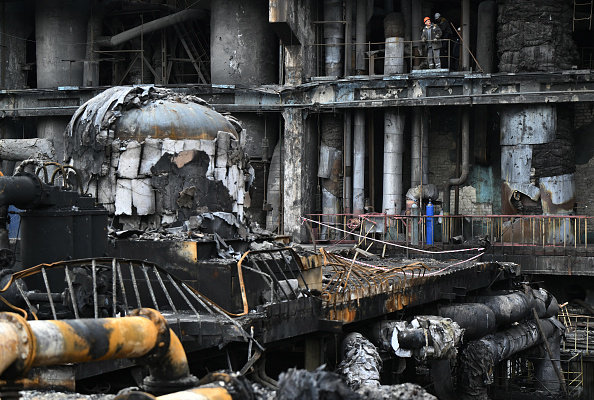In recent days, the First Deputy Prime Minister and Minister of Economy of Ukraine stated that the wartime government of Ukraine plans to enhance domestic value-added production, reshape the economy, increase income, promote growth, and bring back millions of Ukrainians to the country.
Yulia Svyrydenko, in an interview with Reuters, expressed that these changes are crucial for the country’s recovery, rebuilding after the significant losses caused by the war, and for bringing the economy closer to the European Union.
“We aim to support more Ukrainian manufacturing and promote the consumption of goods produced in Ukraine,” she said.
The Ukrainian government has introduced a series of projects offering grants and loans to small and medium-sized enterprises, helping companies relocate to safer areas, and establishing dozens of industrial parks with specialized fiscal measures.
“Our mission is to move away from a raw material economy and build an economy that produces value-added goods. We face the challenge of accelerating growth as we need to rebuild and integrate into the EU,” emphasized Svyrydenko.
She mentioned that the Ukrainian government has revised its economic growth forecast for this year from 3.5% to 4%, attributing it to better preparation for potential challenges in the energy sector.
Furthermore, she stated that the government conservatively estimates a 2.7% increase in the Gross Domestic Product (GDP) for 2025, as the impact of the war, security risks, anticipated energy shortages, and labor shortages will constrain growth.
The Central Bank holds a more optimistic view on the economic outlook for 2025, predicting a growth rate between 4.3% to 4.6% for both 2025 and 2026.
With the Russia-Ukraine conflict approaching nearly a thousand days, Ukraine’s human, social, and economic losses continue to escalate. Svyrydenko mentioned that the government, the World Bank, and other partners are conducting a new assessment of the economic losses incurred due to the war.
The latest estimates reveal that by December 2023, Ukraine’s direct losses have reached $152 billion, with the housing, transportation, commercial and industrial, energy, and agricultural sectors being the most severely affected. The total cost estimation for reconstruction and recovery is $486 billion.
“This is 2.8 times higher than our nominal GDP in 2023,” stated Svyrydenko. The nominal GDP refers to the GDP calculated at current market prices for a specific period, including price factors.
Despite some growth in 2023 and 2024, Ukraine’s economy remains only 78% of its scale before the invasion in February 2022, according to Svyrydenko.
She emphasized that the key objective is to make the Ukrainian economy more self-sufficient.
“In every hryvnia spent in Ukraine, 40% returns to the budget… This is not only about economic self-sufficiency but also about our defense capability,” she said.
Ukraine allocates a significant portion of its national income to defense, heavily relying on financial assistance from allies to cover social and humanitarian expenditures. To date, Ukraine has received nearly $100 billion in economic aid from Western countries.
Svyrydenko noted that a key challenge faced this year and in the future is the decrease in electricity production capacity following intensified bombings on Ukraine’s power sector by Russia.
The government has overseen a large-scale restoration plan and reached agreements with neighboring countries in Western Ukraine to increase electricity imports, while supporting businesses in enhancing energy independence through regulatory simplification and fund allocation.
Svyrydenko highlighted another daunting task for the Ukrainian government is repatriating Ukrainians. Ukrainian businesses consider labor shortages as one of their main issues as millions of Ukrainians are currently abroad, with tens of thousands of Ukrainian men already enlisted.
The Ukrainian government plans to establish a dedicated institution to facilitate the return of Ukrainians to the country. Official data shows that currently, as many as 4.1 million Ukrainians have registered as refugees in European countries.
Research by the Ukrainian government indicates that around 53% of individuals are willing to return home once the security situation improves, providing there are job opportunities and housing available.

